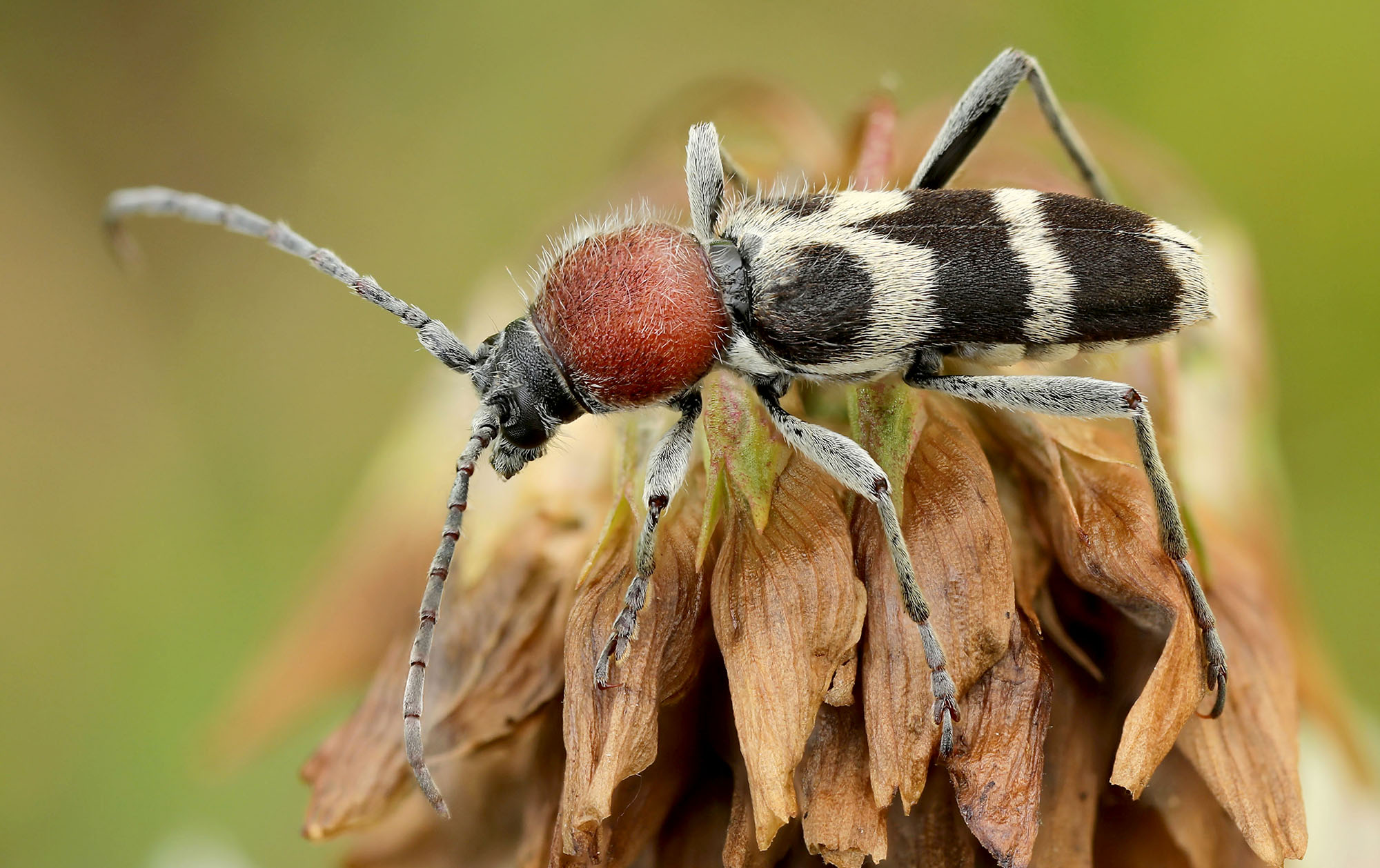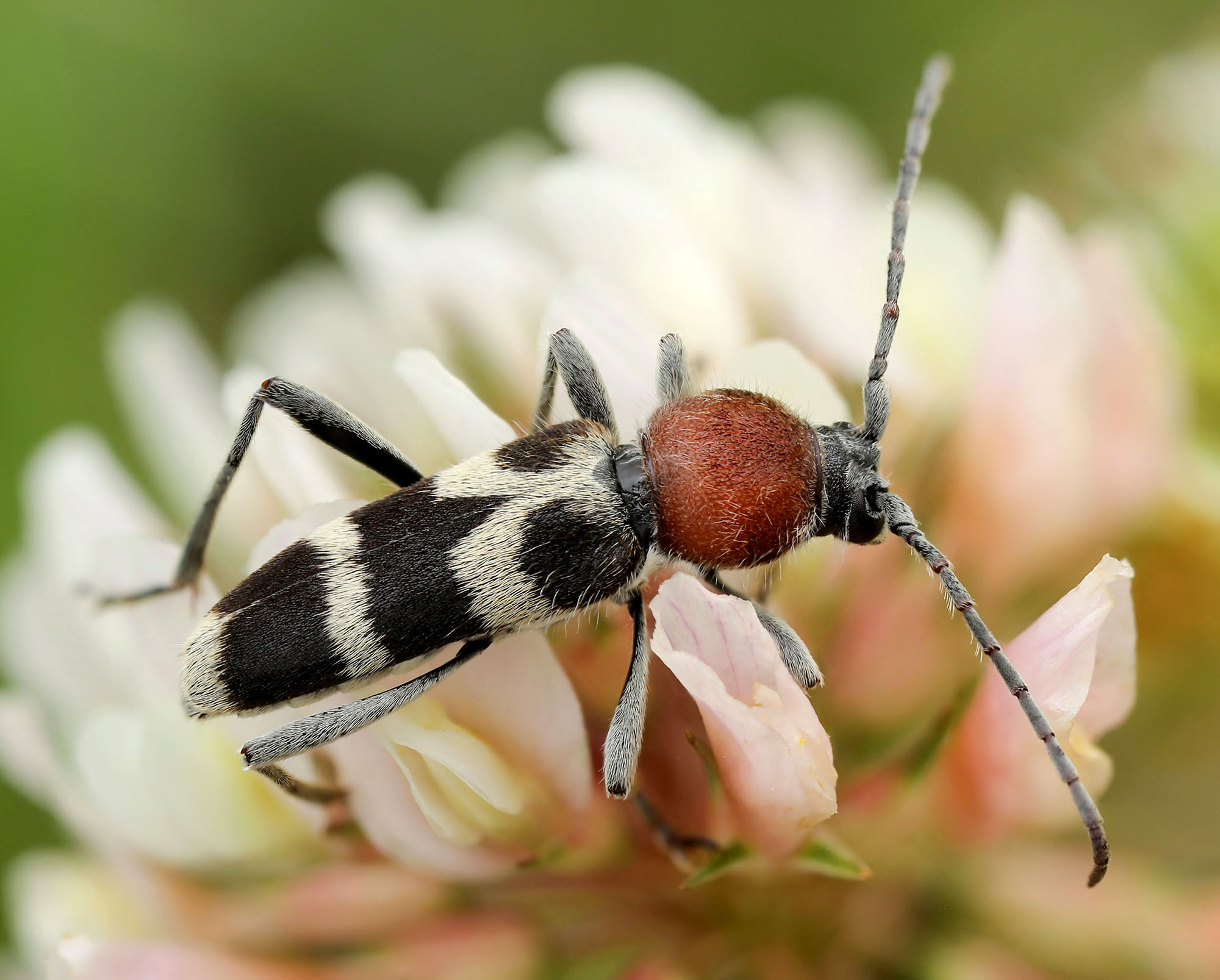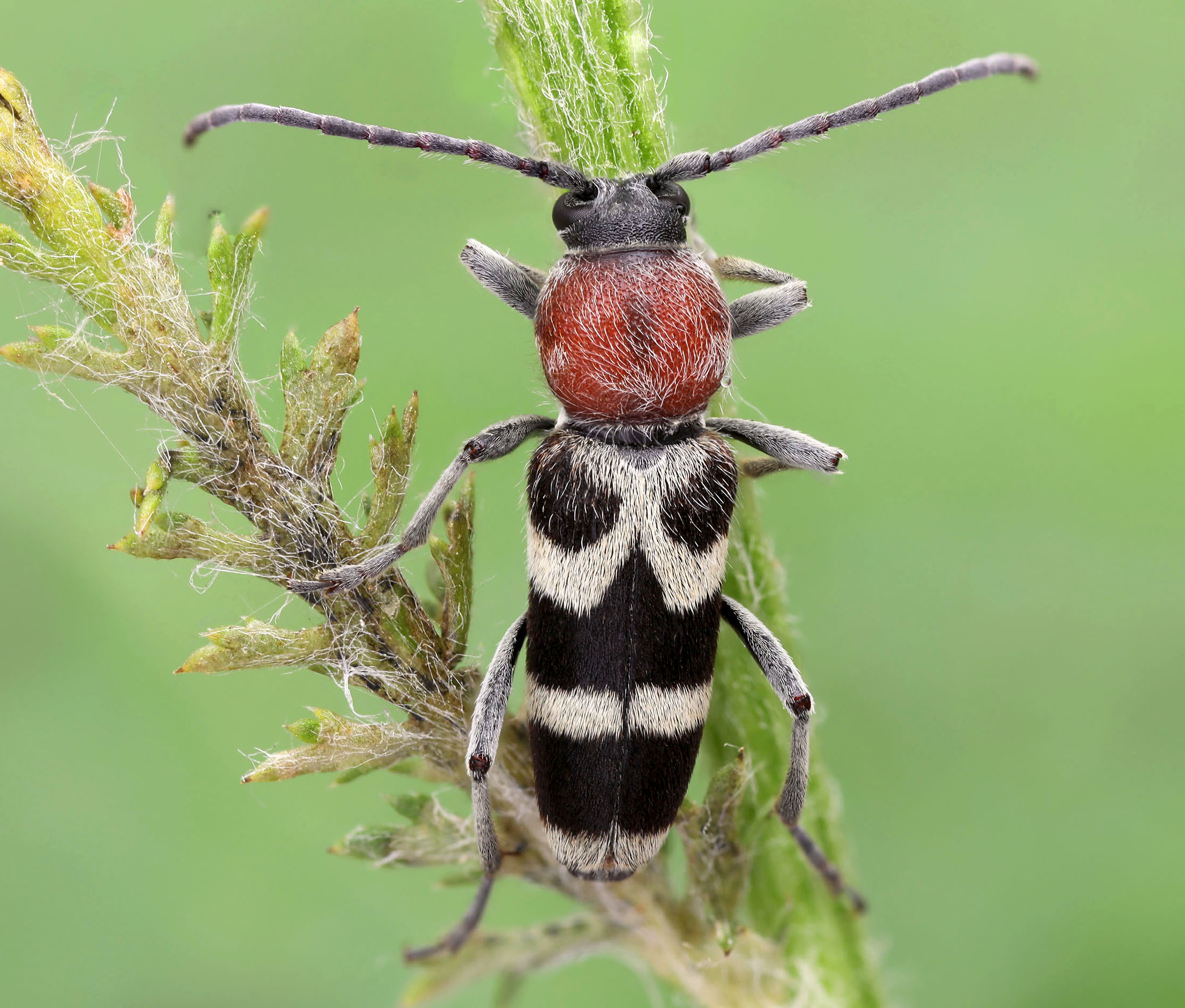Subfamilia: CERAMBYCINAE / Tribus: CLYTINI

[Photo © Daniel Rydzi]
Chlorophorus hungaricus, a species occuring in Central Europe, Balkan Peninsula and Turkey, has been described from Hungary as Clytus (Anthoboscus) hungaricus by Georg Carl Marie Seidlitz in 1891 [▽]. A species of uncultivated and ruderal areas, forest-steppes, generally xerothermic localities of rather steppe character. Ch. hungaricus belongs among the Clytini tribe taxa not developing in the above-ground parts of woody plants but in the roots of legumes (Fabaceae). As the host plant in Central Europe serves prostrate Canary clover (Lotus dorycnium). Life cycle 2 years. Adults, active from June to August, can be found in sunny weather on the host plant [❖].
Body length: 6 - 10 mm Life cycle: 2 years Adults in: May - July Host plant: prostrate Canary clover (Lotus dorycnium, Fabaceae) Distribution: Albania, Austria, Bosnia and Herzegovina, Bulgaria, Croatia, Czechia (Moravia), Greece, Hungary, Montenegro, North Macedonia, Serbia, Slovakia, Turkey
The depicted beetles were photographed on Lotus dorycnium in Štúrovo environs (Nové Zámky District, Nitra Region, South Slovakia) on July 2, 2020.Collected by Daniel Rydzi
[▽]
Seidlitz G.C.M.:
Die Kaefer (Coleoptera) Siebenbürgens.
Fauna Transsylvanica, Hartung, Königsberg 5-6: 914pp, 1891. [download]
[❖]
Sláma M.E.F.:
Tesaříkovití – Cerambycidae České republiky a Slovenské republiky / Cerambycidae of the Czech Republic and Slovak Republic.
Milan Sláma private printing, Krhanice, 383pp [page 170-171], 1998 [ISBN: 80-238-2627-1]. [download]


[Photo © Daniel Rydzi]
| Subfamilia | Cerambycinae Latreille, 1802 |
| Tribus | Clytini Mulsant, 1839 |
| Genus | Chlorophorus Chevrolat, 1863 |
| Species | Chlorophorus hungaricus (Seidlitz, 1891) |
